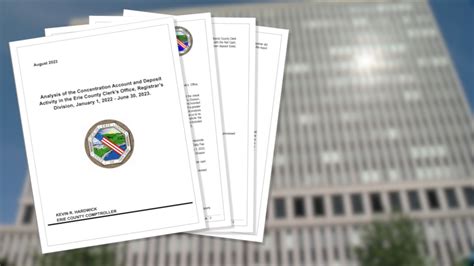
A New York City man is grappling with the devastating loss of his $114,000 retirement savings after a stolen paycheck was fraudulently cashed, leaving him to navigate a complex and frustrating bureaucratic maze to recover his funds.
NYC Man’s $114,000 Retirement Vanishes After Stolen Paycheck Incident
A New York City resident is facing a retirement nightmare after a meticulously planned nest egg of $114,000 vanished due to the fraudulent cashing of a stolen paycheck. The man, identified only as Robert to protect his privacy, now finds himself entangled in a web of bank bureaucracy and legal complexities, casting a dark shadow over his future financial security.
Robert’s ordeal began when a paycheck, legitimately earned but somehow intercepted, was illegally cashed. The thieves managed to exploit vulnerabilities in the banking system, leaving Robert’s retirement account completely drained. The shock of discovering such a significant loss has been compounded by the arduous process of attempting to recover his funds.
“It was all my retirement money,” Robert lamented in an interview. “I don’t know how I’m going to recover from this.”
The incident highlights a growing concern over check fraud and the vulnerabilities individuals face in protecting their financial assets. Law enforcement agencies and financial institutions are increasingly challenged to combat sophisticated schemes that target unsuspecting victims, often with devastating consequences.
The Discovery of the Fraud
Robert first became aware of the theft when he checked his account balance and found it drastically reduced. Initially suspecting a simple error, he contacted his bank, only to be informed that a check had been cashed against his account for the full amount. Further investigation revealed that the check was not only forged but also cashed at a location far from Robert’s home, indicating a clear case of organized fraud.
The bank’s initial response was less than reassuring. Robert was informed that recovering the funds would be a lengthy and uncertain process, requiring him to file affidavits, police reports, and other documentation to prove the fraudulent nature of the transaction. The burden of proof, it seemed, rested entirely on the victim.
Navigating the Bureaucracy
The process of filing the necessary paperwork and navigating the bank’s internal procedures proved to be a significant challenge. Robert spent countless hours on the phone, visiting bank branches, and compiling documents to support his claim. The experience was not only time-consuming but also emotionally draining, as he felt increasingly helpless in the face of bureaucratic obstacles.
“It’s like they’re making me prove that I didn’t steal my own money,” Robert explained. “I’ve provided all the information they asked for, but it feels like I’m getting nowhere.”
The bank’s initial investigation focused on verifying the authenticity of the check and identifying the point of compromise. While they acknowledged the fraudulent nature of the transaction, they were hesitant to immediately reimburse Robert’s account, citing the need to follow established protocols and procedures.
The Emotional Toll
The financial loss has taken a significant emotional toll on Robert. The $114,000 represented years of diligent saving and careful planning for his retirement. The sudden disappearance of these funds has left him feeling vulnerable, anxious, and uncertain about his future.
“I worked hard for that money,” Robert said. “I sacrificed a lot to save for my retirement, and now it’s all gone. It’s hard not to feel angry and helpless.”
The emotional impact of financial fraud can be profound, leading to stress, anxiety, and even depression. Victims often experience a sense of violation and betrayal, particularly when they feel that the institutions entrusted with protecting their assets have failed to do so.
The Broader Context of Check Fraud
Robert’s case is not an isolated incident. Check fraud remains a persistent problem in the United States, despite advancements in banking security and technology. According to the American Bankers Association, check fraud losses totaled hundreds of millions of dollars annually.
Criminals employ a variety of methods to perpetrate check fraud, including:
- Check Theft: Stealing checks from mailboxes, businesses, or homes.
- Check Forgery: Altering or creating counterfeit checks using sophisticated printing and scanning equipment.
- Check Kiting: Exploiting the time lag between depositing a check and its clearance to create artificial balances in multiple accounts.
- Account Takeover: Gaining unauthorized access to a bank account and using it to issue fraudulent checks.
The rise of online banking and electronic payments has also created new opportunities for fraud, as criminals increasingly target digital platforms to steal funds and personal information.
Legal and Regulatory Framework
The legal framework governing check fraud is complex and varies depending on the jurisdiction. Generally, victims of check fraud have legal recourse against the bank or financial institution that cashed the fraudulent check. However, the burden of proof rests on the victim to demonstrate that the transaction was unauthorized and that they exercised reasonable care in protecting their account.
The Uniform Commercial Code (UCC) provides a set of rules governing commercial transactions, including check payments. Under the UCC, banks have a duty to exercise ordinary care in handling checks and are liable for losses resulting from their negligence. However, the UCC also imposes certain obligations on account holders, such as promptly reporting any unauthorized transactions.
The Electronic Fund Transfer Act (EFTA) provides consumer protections for electronic fund transfers, including those made through debit cards and online banking. Under the EFTA, consumers are generally not liable for unauthorized electronic fund transfers if they report the loss or theft of their card or account information within a reasonable time.
Steps to Protect Yourself from Check Fraud
While it is impossible to eliminate the risk of check fraud entirely, there are several steps individuals can take to protect themselves:
- Monitor Your Accounts Regularly: Check your bank statements and account balances frequently for any unauthorized transactions.
- Protect Your Checks: Keep your checkbook in a secure location and never leave blank checks lying around.
- Use Secure Mailboxes: Mail your checks from a secure mailbox or directly at the post office.
- Consider Electronic Payments: Use electronic payment methods, such as online bill pay or direct deposit, whenever possible.
- Shred Unnecessary Documents: Shred any documents that contain your account number or other sensitive information.
- Report Suspicious Activity: Report any suspicious activity to your bank or financial institution immediately.
- Be Wary of Unsolicited Offers: Be cautious of unsolicited offers or requests for personal information, especially those received via email or telephone.
- Use Strong Passwords: Use strong, unique passwords for your online banking accounts and change them regularly.
- Install Anti-Virus Software: Install and maintain anti-virus software on your computer and mobile devices.
Seeking Legal Assistance
Victims of check fraud may also want to consider seeking legal assistance. An attorney can help them understand their rights and options and represent them in negotiations with the bank or in court.
Legal assistance may be particularly helpful in cases where the bank is unwilling to reimburse the victim’s account or where the amount of the loss is substantial. An attorney can also assist with gathering evidence, preparing legal documents, and navigating the complex legal system.
The Road Ahead for Robert
Robert’s case remains unresolved. He is continuing to work with his bank and law enforcement officials to recover his stolen funds. However, the process is slow and uncertain, and there is no guarantee that he will ever see his money again.
In the meantime, Robert is struggling to cope with the financial and emotional consequences of the fraud. He has had to postpone his retirement plans and is facing difficult decisions about his future.
Robert’s story serves as a cautionary tale about the risks of check fraud and the importance of taking steps to protect your financial assets. It also highlights the need for stronger consumer protections and more effective law enforcement efforts to combat this growing problem.
The Bank’s Perspective
While the article focuses on Robert’s experience, it’s important to consider the bank’s perspective as well. Financial institutions are often caught in the middle between protecting their customers and preventing fraud. They must balance the need to investigate potential fraud cases with the obligation to provide timely service to their customers.
Banks have implemented various security measures to detect and prevent check fraud, including:
- Check Verification Systems: These systems use advanced algorithms to verify the authenticity of checks and detect suspicious activity.
- Signature Verification: Bank employees are trained to compare signatures on checks with those on file to identify potential forgeries.
- Account Monitoring: Banks monitor account activity for unusual patterns or transactions that may indicate fraud.
- Fraud Detection Software: This software uses artificial intelligence and machine learning to identify and flag suspicious transactions.
However, criminals are constantly developing new and more sophisticated methods to circumvent these security measures. As a result, banks must continually adapt their security protocols to stay ahead of the curve.
The Role of Law Enforcement
Law enforcement agencies play a crucial role in investigating and prosecuting check fraud cases. They work to identify and apprehend the perpetrators of these crimes and bring them to justice.
However, investigating check fraud can be challenging, particularly when the perpetrators are located in different states or countries. Law enforcement agencies often rely on cooperation from banks, financial institutions, and other government agencies to gather evidence and build their cases.
The Future of Check Fraud Prevention
The future of check fraud prevention will likely involve a combination of technological advancements, enhanced security measures, and increased consumer awareness.
Some of the emerging technologies that may help to combat check fraud include:
- Blockchain Technology: Blockchain can be used to create a secure and transparent record of check transactions, making it more difficult for criminals to alter or counterfeit checks.
- Biometric Authentication: Biometric authentication, such as fingerprint scanning or facial recognition, can be used to verify the identity of check presenters and prevent unauthorized transactions.
- Artificial Intelligence: AI can be used to analyze check data and identify patterns that may indicate fraud.
In addition to technological advancements, it is also important to educate consumers about the risks of check fraud and provide them with the tools and resources they need to protect themselves.
Conclusion
Robert’s story is a stark reminder of the devastating impact that check fraud can have on individuals and families. While there is no foolproof way to prevent check fraud, taking proactive steps to protect your financial assets can significantly reduce your risk. By monitoring your accounts regularly, protecting your checks, and being wary of suspicious activity, you can help to safeguard your hard-earned money and avoid becoming a victim of this pervasive crime. Robert’s battle to recover his life savings continues, underscoring the need for greater vigilance and stronger protections against financial fraud.
Frequently Asked Questions (FAQ)
1. What happened to Robert’s retirement savings?
Robert, a New York City resident, had his $114,000 retirement savings drained after a stolen paycheck was fraudulently cashed. The thieves exploited vulnerabilities in the banking system, leaving his account empty.
2. How did Robert discover the fraud?
Robert discovered the theft when he checked his account balance and found it drastically reduced. Upon contacting his bank, he learned that a check had been cashed against his account for the full amount.
3. What steps is Robert taking to recover his funds?
Robert is working with his bank and law enforcement officials to recover his stolen funds. He has filed affidavits, police reports, and other documentation to prove the fraudulent nature of the transaction.
4. What can individuals do to protect themselves from check fraud?
Individuals can protect themselves by monitoring their accounts regularly, protecting their checks, using secure mailboxes, considering electronic payments, shredding unnecessary documents, reporting suspicious activity, being wary of unsolicited offers, using strong passwords, and installing anti-virus software.
5. What legal recourse do victims of check fraud have?
Victims of check fraud may have legal recourse against the bank or financial institution that cashed the fraudulent check. The Uniform Commercial Code (UCC) provides rules governing commercial transactions, and the Electronic Fund Transfer Act (EFTA) offers consumer protections for electronic fund transfers. Seeking legal assistance from an attorney can also be beneficial.
Expanded Analysis: Check Fraud in the Digital Age
While Robert’s case involves a physical check, the specter of digital fraud looms large in today’s financial landscape. The rise of online banking, mobile payments, and cryptocurrency has created new avenues for criminals to exploit, making check fraud just one piece of a much larger and more complex puzzle.
The Convergence of Traditional and Digital Fraud
Traditional check fraud is increasingly intertwined with digital tactics. For instance, stolen checks may be scanned and digitally deposited into fraudulent accounts, or personal information obtained from phishing scams may be used to create counterfeit checks. This convergence of traditional and digital fraud makes it more difficult to detect and prevent.
The Rise of Account Takeover Fraud
Account takeover (ATO) fraud is a growing concern for banks and consumers alike. ATO occurs when criminals gain unauthorized access to a bank account, typically through phishing, malware, or social engineering. Once inside, they can change passwords, transfer funds, and even order new checks.
The Vulnerability of Small Businesses
Small businesses are particularly vulnerable to check fraud and other forms of financial crime. They often lack the resources and expertise to implement robust security measures, making them an easy target for criminals. According to the Association for Financial Professionals (AFP), check fraud is one of the most common types of fraud experienced by small businesses.
The Impact of Remote Work
The shift to remote work has also created new opportunities for fraud. With more employees working from home, companies are finding it more difficult to monitor their financial transactions and prevent unauthorized access to sensitive data. This has led to an increase in internal fraud, where employees abuse their access to steal funds or information.
The Role of Artificial Intelligence in Fraud Detection
Artificial intelligence (AI) is playing an increasingly important role in fraud detection. AI algorithms can analyze vast amounts of data in real-time to identify suspicious patterns and transactions that may indicate fraud. These algorithms can learn from past fraud cases and adapt to new and evolving threats.
The Importance of Multi-Factor Authentication
Multi-factor authentication (MFA) is a critical security measure that can help to prevent account takeover fraud. MFA requires users to provide two or more forms of authentication, such as a password and a one-time code sent to their mobile phone, before they can access their account. This makes it much more difficult for criminals to gain unauthorized access, even if they have obtained the user’s password.
The Need for Greater Consumer Awareness
Ultimately, preventing check fraud and other forms of financial crime requires greater consumer awareness. Consumers need to be educated about the risks of fraud and provided with the tools and resources they need to protect themselves. This includes educating them about phishing scams, malware, and other tactics used by criminals.
Collaboration is Key
Combating check fraud and other forms of financial crime requires collaboration between banks, law enforcement agencies, and consumers. Banks need to invest in robust security measures and work closely with law enforcement to investigate and prosecute fraud cases. Law enforcement agencies need to prioritize financial crime investigations and work to disrupt criminal networks. And consumers need to be vigilant and report any suspicious activity to their bank or law enforcement.
The Future of Payments: A Move Away from Checks?
Given the ongoing challenges associated with check fraud, there is a growing movement towards alternative payment methods, such as electronic payments, mobile payments, and real-time payments. These payment methods offer several advantages over checks, including increased security, faster processing times, and lower costs.
Real-Time Payments: A Game Changer?
Real-time payments (RTP) are a new type of payment that allows funds to be transferred instantly between bank accounts. RTP offers several advantages over traditional payment methods, including increased speed, transparency, and security. It also eliminates the need for checks, reducing the risk of check fraud.
The Challenges of Implementing New Payment Systems
Despite the advantages of alternative payment methods, there are still challenges to their widespread adoption. These challenges include the cost of implementing new payment systems, the need for interoperability between different payment networks, and the resistance from some consumers who are accustomed to using checks.
A Gradual Transition
The transition away from checks is likely to be a gradual process. Checks are still widely used in the United States, particularly by small businesses and older consumers. However, as alternative payment methods become more widely available and easier to use, their adoption is likely to accelerate.
The Need for Regulation
As new payment methods emerge, there is a need for regulation to ensure that they are safe, secure, and accessible to all consumers. Regulators need to develop rules that protect consumers from fraud and abuse, while also fostering innovation and competition in the payments industry.
A Continual Arms Race
The fight against check fraud and other forms of financial crime is a continual arms race. As banks and law enforcement agencies develop new methods to detect and prevent fraud, criminals are constantly developing new and more sophisticated tactics. To stay ahead of the curve, it is essential to invest in ongoing research and development and to foster collaboration between all stakeholders.
The Human Cost
It’s crucial not to lose sight of the human cost of financial fraud. Behind every statistic, there are real people like Robert who have been victimized and suffered significant financial and emotional harm. Providing support and resources to victims of fraud is an essential part of the fight against this pervasive crime.
Financial Literacy: A Key Defense
Promoting financial literacy is another key defense against financial fraud. By educating consumers about basic financial concepts, such as budgeting, saving, and investing, we can empower them to make informed decisions and protect themselves from fraud.
Building a More Secure Financial Future
By embracing new technologies, strengthening security measures, promoting consumer awareness, and fostering collaboration, we can build a more secure financial future for all. Robert’s story is a call to action, reminding us that the fight against financial fraud is an ongoing battle that requires vigilance, innovation, and a commitment to protecting the vulnerable.









